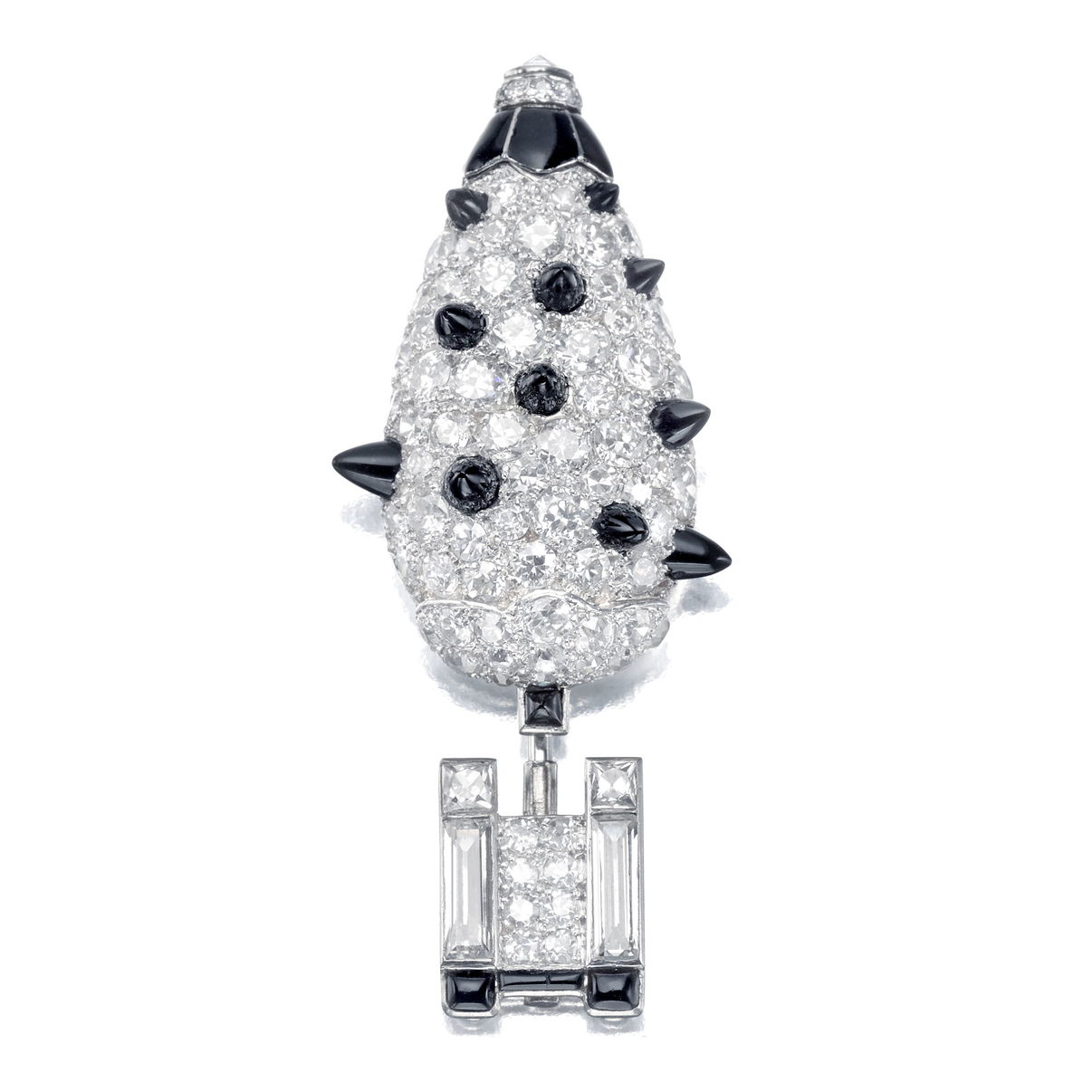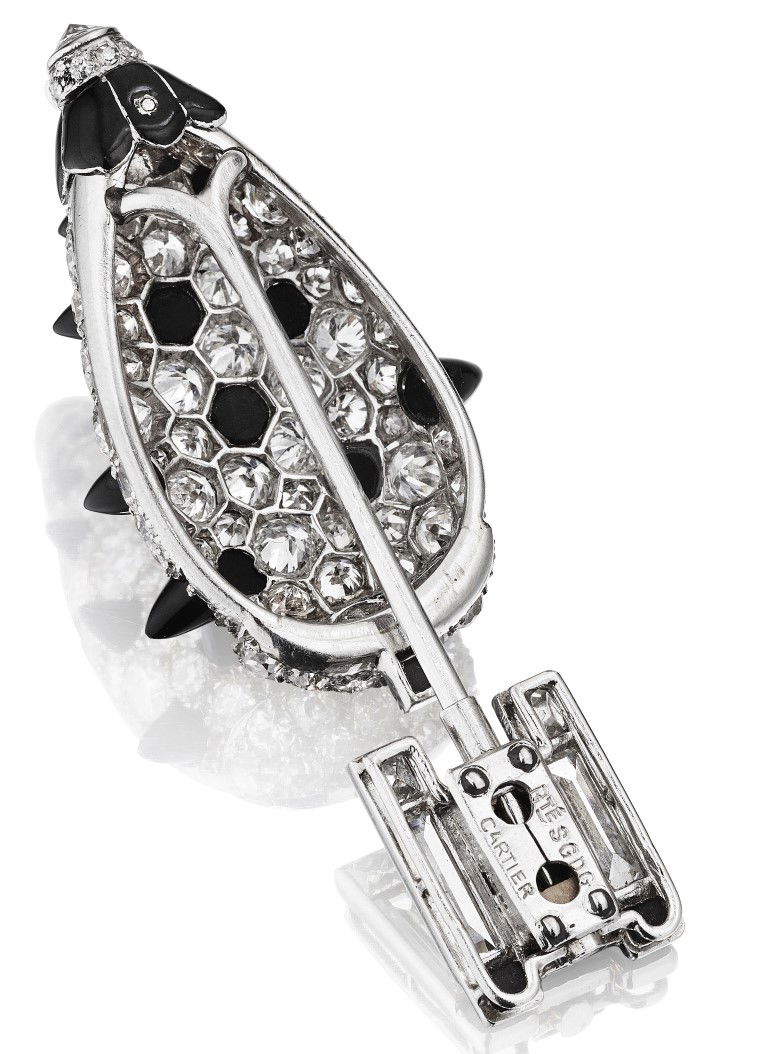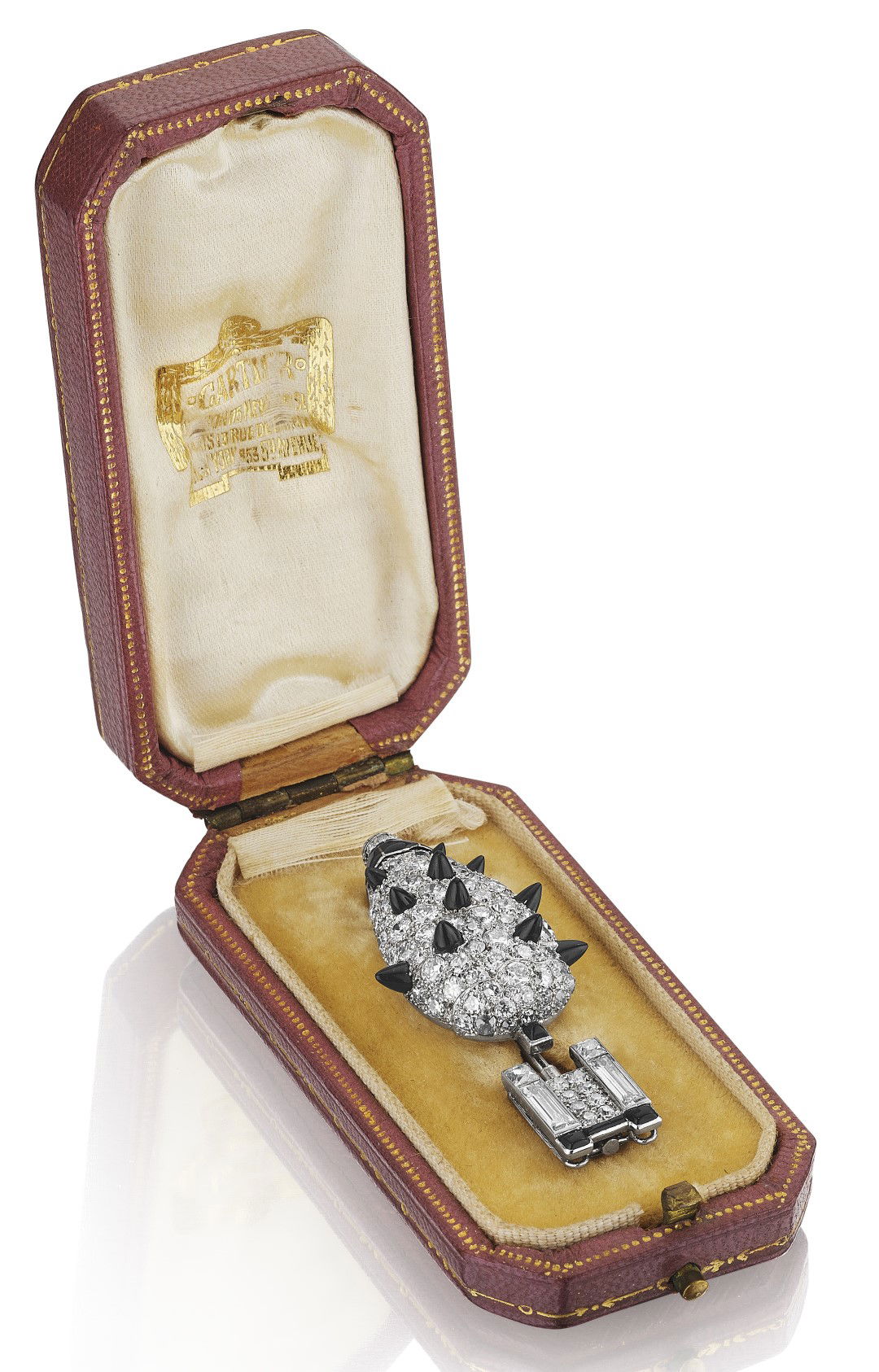Monochromatic Cartier jewels, principally set with diamonds and onyx and decorated with black enamel, had become popular before the First World War, perhaps sparked off by the tragic loss of the Titanic in 1912, and matched the mood of the years during and immediately after the conflict. They still featured prominently in Cartier’s vitrines at the important 1925 Exposition des Arts Décoratifs in Paris, when colour began to be reintroduced in jewellery in harmony with the exuberance of the decade.
An Art Deco onyx, diamond and enamel topiary brooch, Cartier, Paris, circa 1925
We find this charming topiary brooch captivating with its mixture of textures and the contrasting forms of the rigidly rectilinear pot and the stylised fruiting bush.


Brooches such as this composed of two jewelled elements connected by a metal bar – known in the trade as jabot pins or cliquet pins – were worn not only on dresses or the lapel of an evening coat but also on hats and turbans.

This is a fine brooch evocative of its age that would fit snugly in a collection of jewels of the period whilst also being at the same time very contemporary and wearable.

written by

Further details:
Art Deco black onyx, diamond and enamel topiary brooch
Cartier, Paris, circa 1925
The brooch designed as a potted topiary set throughout with European-cut diamonds interspersed with French-, baguette- and single-cut diamonds, accented with black onyx detailing, completed with black enamel accents and a reverse-set diamond at the apex, mounted in platinum, with French assay marks
Signed Cartier, no. 07902, RTÉ SGDG | In original Cartier fitted box | Dimensions: 2 x 7/8 x 1/2 inches / 51.0 x 22.0 x 13.0mm approx.
Literature: Hans Nadelhoffer, Cartier, Jewelers Extraordinary, New York, Harry N. Abrams, 1984, plate 11
For further information on the Art Deco topiary brooch:
info@understanding-jewellery.com
